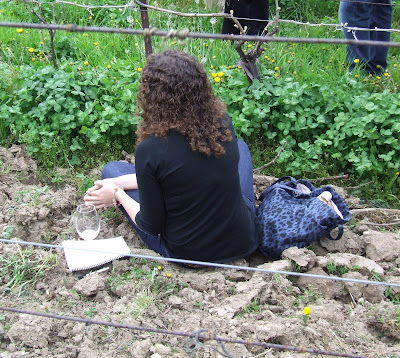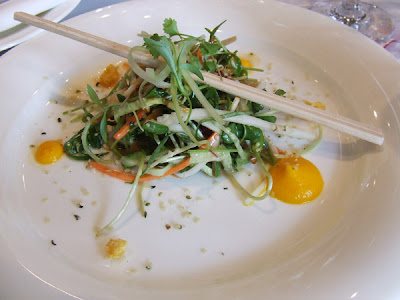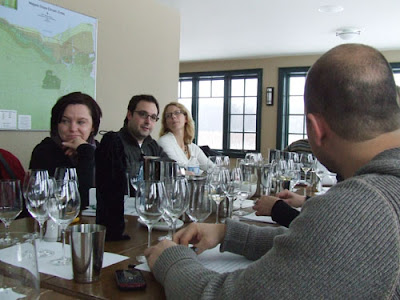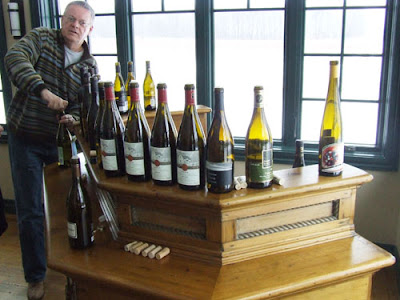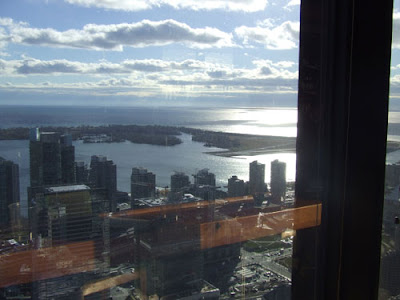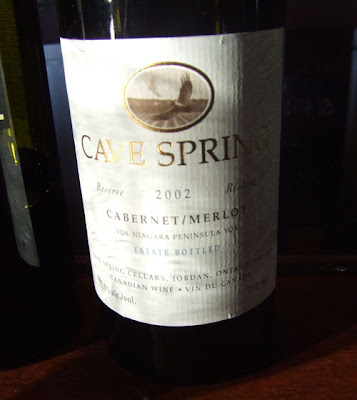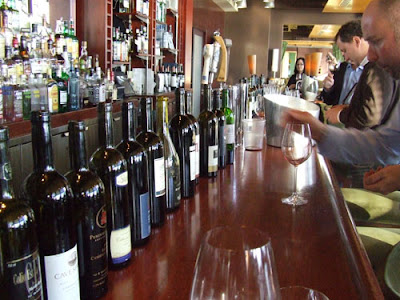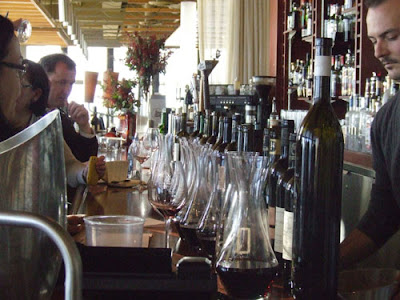Of Branding and Blending: Vincor's Vintage Ink Wines
Recently I, along with many other bloggers, was invited to the introduction party for Vincor's new line of Vintage Ink wines. The first thing that strikes you about the wines is the branding. There's no château, no critter and no Canadiana on the labels. Instead it's exactly what you'd think given the line's name and the tag line “indelible wines.” If I had to guess the tattoo-centric branding ,which emphasizes brand first, grape second and then origin and vintage after that, is targeted at the Millennial Generation a.k.a. Generation Y. This is something Vincor's parent Constellation has already has experience with south of the border under brands like Primal Roots. It's a smart group to target because it's young, engaged and has the desire and disposable income to spend money on food and wine.
 |
| From VIntage Ink |
What you have with the Vintage Ink line are bottles priced at $17-18. That's not really expensive for a bottle of VQA wine which tends to start at about $12-13 because the taxes and distribution costs mean that's where wineries begin to see some profit. That puts the line in the medium price category—just outside the LCBO's highest volume sweet spot of $12-15 making it a reasonable splurge for many. It also doesn't break the $20 psychological barrier which helps if you want to be a volume seller like Vincor does with this line. But whether people will shell out the extra couple of dollars remains to be seen.
In the last handful of years VQA sales at the LCBO have seen double digit growth (from a low of 11.8% to a high of 19%) over the previous year at the LCBO. Where growth has been more modest is in Vintages where for example growth was 17% in 2009-10, two percent lower than VQA products did overall in the LCBO that year and about half of the growth VQA experienced in Vintages the previous year. If you want to get more consumers into a higher priced category as the both the LCBO and any winery would like to do, Vintages is a key part of making that goal a reality. That's why both Vincor and the LCBO would like to see the Vintage Ink line succeed. Although the locavore movement has exploded over the past few years Canadian-made wine still has a relatively low 42% percent of its own market. A far cry from the Americans' 80 percent share of their market or France's and Italy's even larger share. That's changing but you have to remember change like that takes time and aside from the few visionary pioneers Ontario as whole really only began making premium vinifera-based wine for about the past 20 years.
 |
| From VIntage Ink |
All this is great but the key to growth is getting people to buy more than once and that ultimately comes down to what the juice inside the bottle tastes like. The white is Chardonnay. That makes a lot of sense as the most widely planted grape in Ontario and amongst consumers as the most easily recognisable premium white wine grape. On the nose it's a little floral and tropical with just a hint of vanilla and spice to give away the five month average of oak barrel aging. On the palate there's pineapple, peach, a bit of green apple, pear, citrus, vanilla and oak spice. It has a medium plus round feel but lacks the punch of the mouth watering food-friendly Ontario acidity—it's more like a medium-minus level. Part of that could be stylistic but the Chardonnay also came from the much warmer 2010 vintage so that might explain the why it's closer to a rich round style than the lithe crisp and mineral-acid driven Chardonnay that's an Ontario signature. It's available in Vintages beginning August 20th.
The red, available in Vintages on Sept. 10th is a Merlot-Cabernet blend with ¾ Merlot, 1/5th Cab Franc and the reminder Cabernet Sauvignon. It's wise decision because there's a lot of Merlot grown in Ontario and if you want a supple drink-now crowd-pleaser of a blend Merlot's your grape. When you put your nose to the glass you notice red and black fruit with the Cabernet Franc providing an alluring cedar, herbal and tobacco edge. On the palate there's red and black plum, a bit of cassis and some vanilla on the finish. The tannins are at the medium-minus level. It's an easy drinking red that I imagine will please when it's likely to be opened within the typical 48 hours of purchase. The acid, at the medium minus level, is higher than the Chardonnay, but that's perhaps owing to the cooler wetter 2009 vintage for the Merlot-Cabernet and the hotter 2010 vintage for the Chardonnay.
 |
| From VIntage Ink |
Of the two I would gravitate to the Merlot-Cab with its higher acid which is always a good food match. I would probably pair it with something like a middle eastern spiced lamb kofta if you're feeling exotic or a classic steak sandwich if you aren't.
Interestingly both wines contain grapes from some premium properties in the Vincor Family. For instance the Chardonnay has grapes that come from Jackson-Triggs' famed Delaine vineyard in the Niagara River sub-appellation—responsible for many of its top of the line single vineyard bottlings. Grapes are also sourced from Inniskillin's Montague in Four Mile Creek and Heron Pond Bench on the Beamsville Bench of Inniskillin's Three Vineyard series. As winemaker Keith Brown said the quality of the grapes is still the biggest factor in winemaking—there's no substitute for good vineyard management. But at the same time wine isn't entirely made in the vineyard either. You only have to attend a single blending session to become a believer that blending can be used to bring different characteristics to a wine in both a single variety and multi-variety blend. It's that the whole is greater than sum of the parts philosophy. When you have a variable climate in a regional that grows just about all the world's major vinifera varieties it's not a bad idea not to rely on a single grape type from a particular vineyard plot year-after-year. Blending allows that kind flexibility. After all as much as consumers crave consistency when they find something that they love, it's also tends to be human habit to be a little curious about the next big thing.
 |
| From VIntage Ink |
The Vintage Ink line is not exactly the kind of sexy thing oenophiles and terroir-ist gravitate to but that really doesn't matter. Most people in those groups like something a little more idiosyncratic in the taste profile than these wines provide. This is about creating a ready-to-drink quality sub-$20 wine that's a step-up in character from the basic entry level $12-13 wine. In that context they're both solid wines. I'm curious to see how the Vintage Ink brand is received and where it might be heading in subsequent vintages.





